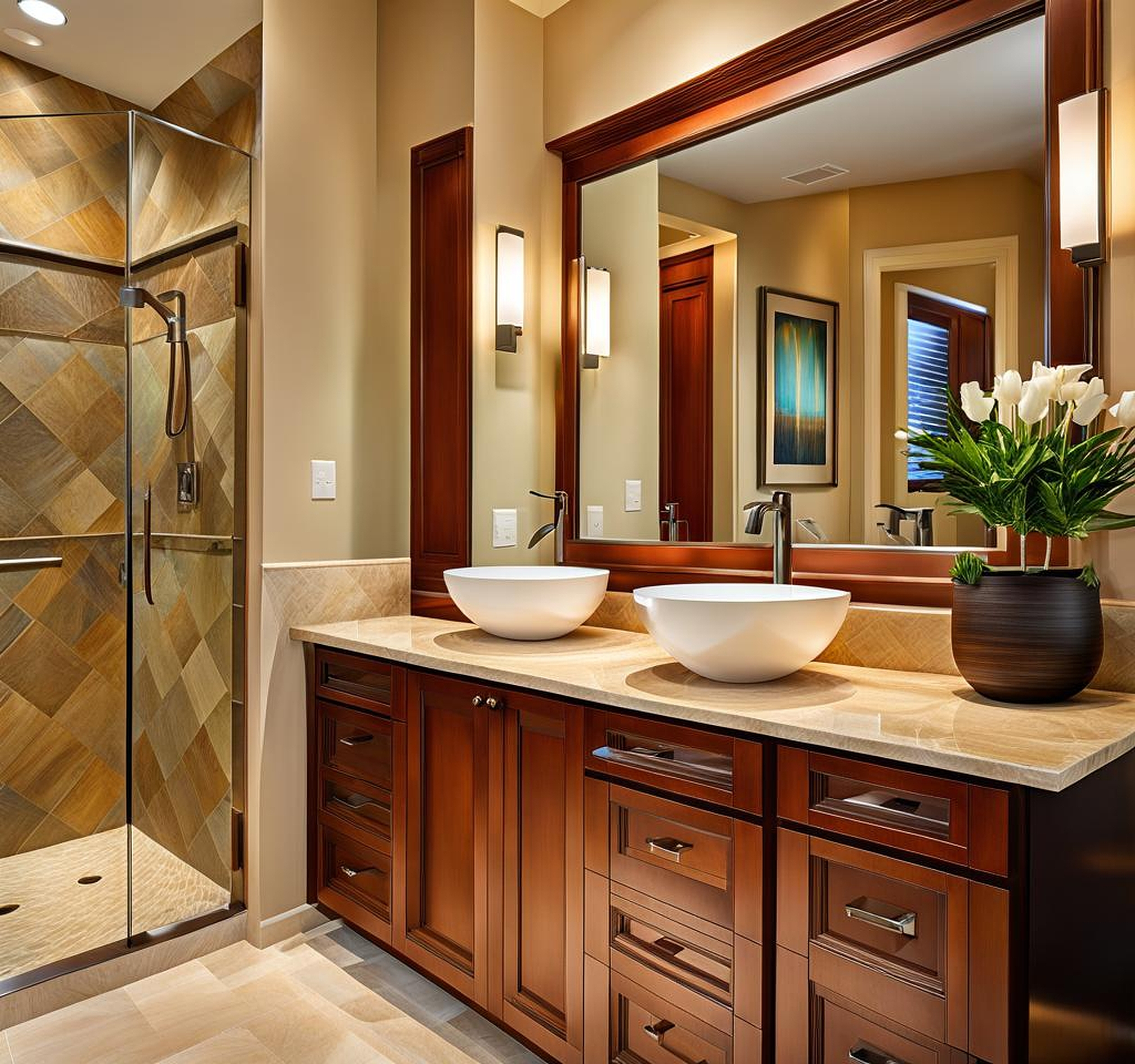The perfect bathroom sink height is important for a comfortable space. How high should bathroom sink be? This question might seem trivial, but getting the measurements right can make a world of difference in your daily routine and overall bathroom experience.
Bathroom Sink Height: Understanding the Essentials
The bathroom sink is a focal point where we perform various tasks, from brushing our teeth to washing our faces. Having the sink at an ergonomic height prevents unnecessary strain on your back and neck, making these routines effortless and enjoyable. However, determining the ideal bathroom sink height isn’t a one-size-fits-all solution. Several factors come into play, including the user’s height, the sink’s purpose, and the overall bathroom design.
Before delving into the specifics, it’s essential to understand that the bathroom sink height is measured from the finished floor to the top of the sink basin’s rim. This measurement is crucial as it determines the comfort level and accessibility of the sink for users of different heights. Getting it right ensures a seamless experience, whether you’re a towering individual or someone of more modest stature.
Factors Influencing the Ideal Bathroom Sink Height
Achieving the perfect bathroom sink height is a delicate balance of various elements. Here are some key factors to consider:
User Height: The most obvious factor is the height of the primary users. A sink that’s too high or too low can lead to discomfort and potential back or neck strain over time. Generally, the standard bathroom sink height ranges from 32 to 34 inches for adults, but it’s always best to tailor it to your specific needs.
Bathroom Type: The intended use of the bathroom plays a significant role in determining the ideal sink height. For example, a bathroom primarily used by children or individuals with mobility issues may require a lower sink height for easier access. On the other hand, a bathroom designated for taller individuals may benefit from a slightly higher sink.

Sink Style: The style of the sink can also influence the height. Western-style bathroom sinks, for instance, are typically deeper and may require a slightly lower height for optimal use. Vessel sinks, on the other hand, sit above the counter and may necessitate a taller sink height.
Countertop Height: If you’re installing a sink on a countertop, the countertop height will be a determining factor. Most standard countertops are around 36 inches high, so the sink height should be adjusted accordingly to maintain a comfortable working height.
Universal Design: For those planning a bathroom renovation or new construction, considering universal design principles can be beneficial. Universal design aims to create spaces that are accessible and comfortable for people of all ages and abilities. This approach often calls for adjustable or multiple-height sinks to accommodate a wider range of users.
Industry Standards and Guidelines for Bathroom Sink Heights
While personal preferences and specific needs should be the primary drivers when determining bathroom sink height, it’s helpful to be aware of industry standards and guidelines. These recommendations can serve as a starting point and provide a range to work within:
- Standard Bathroom Sink Height: The generally accepted standard height for bathroom sinks is between 32 and 34 inches from the finished floor to the top of the sink basin’s rim. This range accommodates most adults comfortably.
- ADA Guidelines: The Americans with Disabilities Act (ADA) provides guidelines for accessible design. For bathroom sinks, the ADA recommends a maximum height of 34 inches from the finished floor, with knee and toe clearance below the sink for wheelchair users.
- Children’s Bathroom Sink Height: For bathrooms primarily used by children, a lower sink height between 24 and 30 inches is often recommended to facilitate easier access and use.
It’s important to note that these guidelines are just starting points, and individual needs may vary. Consulting with a professional designer or contractor can help ensure the sink height is tailored to your specific requirements.
Now that we’ve covered the essentials, let’s dive into some practical tips to help you choose the perfect bathroom sink height:
Measure Yourself: Stand in front of a mirror and observe the most comfortable height for your daily grooming routines. This simple exercise can provide valuable insights into the ideal sink height for your needs.
Consider Sink Drainage: Don’t forget to factor in the sink drainage height when determining the overall sink height. Proper drainage is crucial for preventing water from pooling and ensuring a hygienic bathroom experience.
Prioritize Ergonomics: Comfort should be the top priority when selecting a bathroom sink height. Avoid hunching over or stretching too far, as these postures can lead to discomfort and potential long-term issues.
Think About Resale Value: If you’re planning to sell your home in the future, it’s wise to consider sink heights that appeal to a broader range of potential buyers. Sticking to industry standards can make your bathroom more attractive to prospective buyers.
Bathroom Vanity Designs: For those opting for bathroom vanities, pay close attention to the vanity height and ensure the sink height complements it. Many vanity manufacturers provide guidelines on recommended sink heights for their designs.
Anticipate Future Needs: If you’re planning to age in place or have family members with varying abilities, consider incorporating adjustable or multiple-height sinks into your bathroom design. This versatility can accommodate changing needs over time.
Consult Professionals: If you’re unsure about the best sink height for your bathroom, don’t hesitate to consult with professionals. Interior designers, architects, or experienced contractors can provide valuable insights and recommendations based on your specific needs and preferences.
Remember, the bathroom sink height is a crucial aspect of bathroom design that can significantly impact your daily routine and overall comfort. By considering the factors outlined above and following practical tips, you can create a bathroom space that seamlessly blends functionality, ergonomics, and aesthetics, ensuring a smooth and enjoyable experience for years to come.